Bolsa Chica wetlands: wildly successful
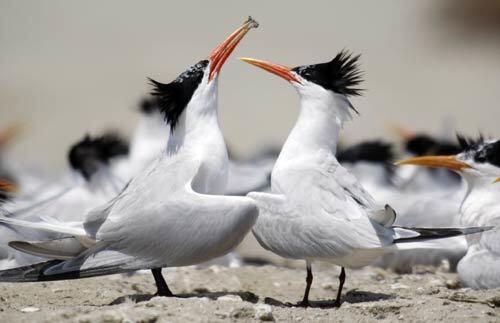
A pair of elegant terns fight over a morsel of fish intended for a chicks in the nesting area at the Bolsa Chica Ecological Reserve in Huntington Beach. Nearly two years after ocean water was allowed to flow back into the wetlands, life couldn’t be better for the birds and creatures who nest there and it call the sensitive area home. (Mark Boster / Los Angeles Times)
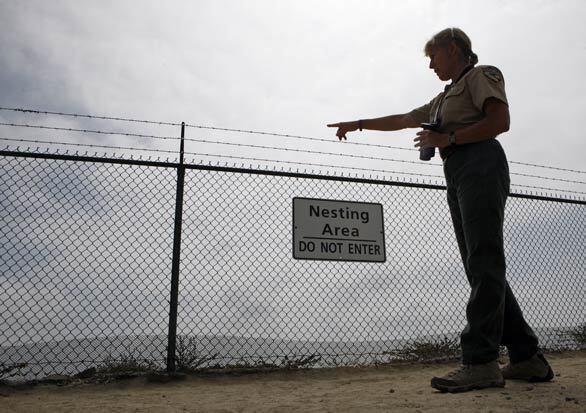
Associate Marine Fisheries Biologist Kelly M. O’Reilly checks one of the sensitive nesting areas at Bolsa Chica. “Ive been watching the place kind of come to life over the last year and a half,” she said. (Mark Boster / Los Angeles Times)
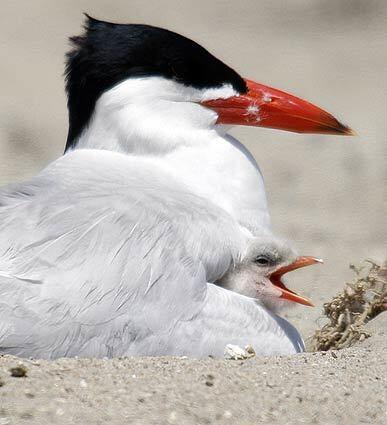
A Caspian tern chick peeks out at the world while waiting for food. With ample food available in the form of small fish in the nearby estuaries and bays of the reserve, large numbers of Caspian terns flock to the area in the spring to breed, nest and feed their young. (Mark Boster / Los Angeles Times)
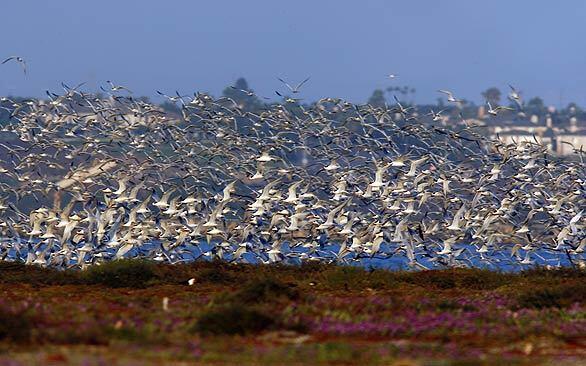
Thousands of birds -- mostly Caspian terns -- take flight at dusk in the Bolsa Chica Ecological Reserve. (Mark Boster / Los Angeles Times)
Advertisement
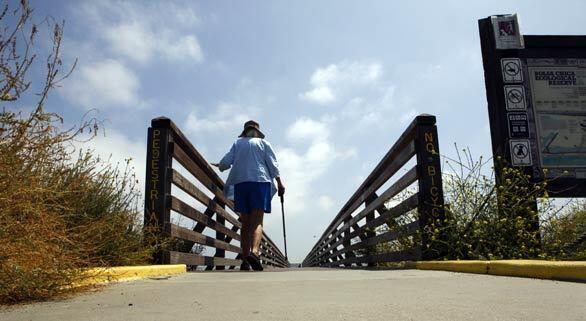
A footbridge over Inner Bolsa Bay in the Bolsa Chica reserve. With rows of homes and active oil derricks at its edge, the Bolsa Chica reserve serves as a vital island for wetland dwellers and an unexpectedly peaceful spot for visitors. (Mark Boster / Los Angeles Times)
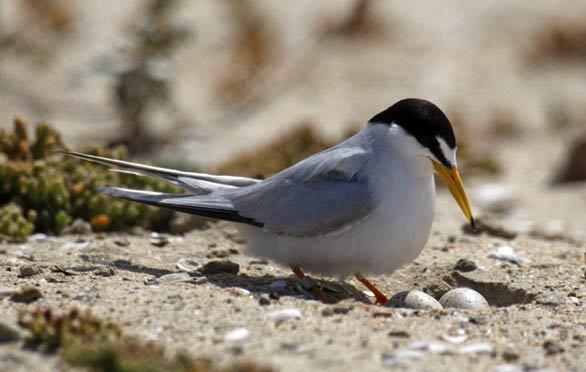
A least tern checks eggs in the shallow nest dug in the sand at the Bolsa Chica Ecological Reserve in Huntington Beach. Newly built nesting sites offer refuge for a number of endangered birds, including the least tern. (Mark Boster / Los Angeles Times)
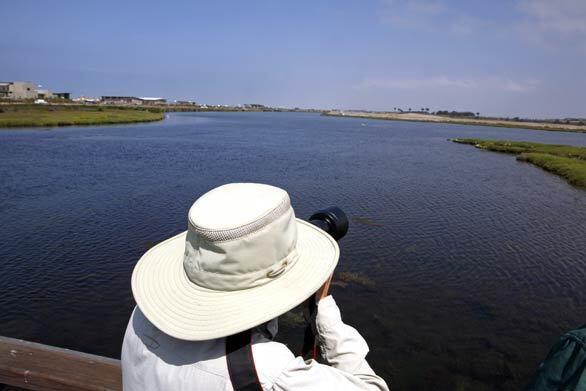
Photographers have an unobstructed view of the wildlife from the footbridge over Inner Bolsa Bay at the Bolsa Chica reserve. (Mark Boster / Los Angeles Times)
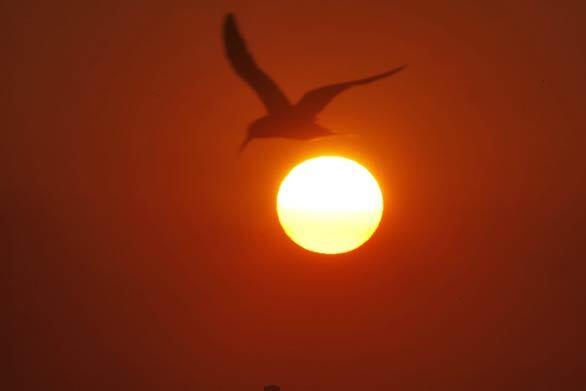
A tern flies past the setting sun at Bolsa Chica. Preservationists continue to fight efforts to stem development on nearby tracts of land, one of which has been farmed, the other home to Native American remains and artifacts. (Mark Boster / Los Angeles Times)







